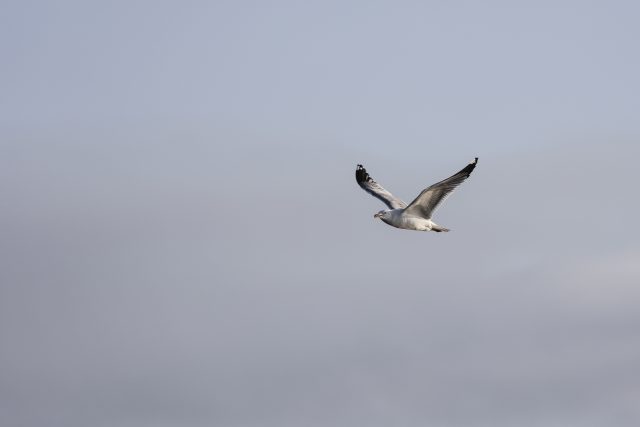Someone asked me recently about the max frame rate of my camera. I didn’t know the answer. I paused, probably grimacing a bit. I quickly tried to think back to what it said in the user manual, then remembered that I didn’t read the manual. Because I never do.
So I figured I’d say something that sounded reasonable: “Uh, 8…I think?” Yeah, 8 frames per second sounded about right. The person asking the question appeared satisfied with my answer and didn’t seem to mind that I answered his question with what was essentially another question.
I didn’t know the answer because (apart from my consistent failure to read the manual) frames per second (FPS) isn’t a thing that often comes into play for my style shooting. I suspect I’d have a different mindset if I shot something like sports or birds-in-flight on a regular basis.
But no matter what your subject is or how quickly that subject moves or how much action is occurring or how novel a situation is, it’s important to remember that good photos are made before you ever press the shutter button.
Below we’ll consider three situations where people have a tendency to overuse burst mode and what you can do to overcome that to become a more efficient photographer.
1. When Photographing Motion
Let’s use the previously mentioned birds-in-flight as an example. This is a far trickier undertaking than many people realize. It’s probably a natural tendency for many inexperienced shooters to have their camera in burst mode and just let it rip every time the bird so much as wiggles a feather.
You may, in fact, get lucky and walk away with a keeper or two but this methodology is going to fail you in the long run. Instead, see the shot before you take the shot. You can avoid a poorly lit subject by evaluating the light and then positioning yourself accordingly.
Likewise, frame your shot in such a way to eliminate distractions. This may be as simple as taking a couple of steps in any direction or taking a lower position. Now all you have to worry about is anticipating the path of travel of the bird and predicting when and where it might land. Have your finger on the shutter ready to fire off a few choice shots.
Of course, variables are plentiful when shooting out in the wild. There’s not a whole lot you can control, but a little pre-visualization can go a long way. Simply leaning on the shutter button isn’t going to help your technique and is only going to create more work when it comes time to cull and process.

2. When Photographing Action
Sports photographers know that there are prime moments in the action they spend their day capturing. Their job isn’t to capture every single moment at an event — that’s what the television broadcasters are there for.
Sports photographers, like nature photographers, are well versed in the art of anticipation and you’d be wise to take a page out of their playbook.
The best thing you can do is know your subject in both broad and specific ways. If you want to successfully photograph a baseball game, for instance, you’ll need to know about the layout of the field and where players will be positioned. Even more importantly, you’ll need to know the habits/tendencies of the players.
Waiting for the pitcher to wind up, watching him stare down the batter; watching the batter try to figure out what pitch is coming at him. The wiggle. The leg kick. The pitch. The swing. Each of these moments holds huge photographic potential and this is where your best images are most likely to be created.
Again, the spray-and-pray approach might land you a decent image, but ultimately this is only going to increase the time and effort you have to put into your editing workflow.

3. When Visiting A New Place
Visiting new places is fun for anyone, but I think photographers get an extra special thrill out of traveling because there are just so many new things to shoot. Don’t let your excitement, however, turn you into a bad photographer.
While there are several ways to define “bad photographer,” my meaning here is akin to what we’ve been discussing throughout this piece — don’t let burst mode overrule your better judgment.
It’s tempting to try and photograph everything you see, but that’s a kind of pressure you shouldn't put on yourself. I have witnessed with my own eyes tourists walking and waving a camera at their surroundings while holding down the shutter button. That is a recipe for disappointment.
Face it — when you’re on vacation you won’t be able to capture every cool thing you see, nor do you need to. You may also have to contend with factors beyond your control, such as bad weather, so shoot selectively and shoot to preserve a memory.
The goal of your vacation photography should be to create a visual record that reflects the highlights and special moments of your trip. It shouldn’t be a play-by-play account of the entire outing. I’m quite sure you don’t want to return home dreading having to sort through the thousands of unnecessary photos you took.

Final Thoughts
As I’ve grown as a photographer, I’ve found that I actually shoot fewer frames than I did when I first picked up a camera. Sure, it’s great to have the option of firing off 10 shots in a second, but it’s a feature I seldom use. And it’s a feature that some photographers could stand to use less. While you’ll certainly get lucky from time to time, this won’t contribute to growth in any meaningful skill area and it will make for hours spent sifting through dozens and dozens of shots, hoping to find the perfect moment.
Paying close attention to your subject and learning to only press the shutter at key moments is far more productive and satisfying.




